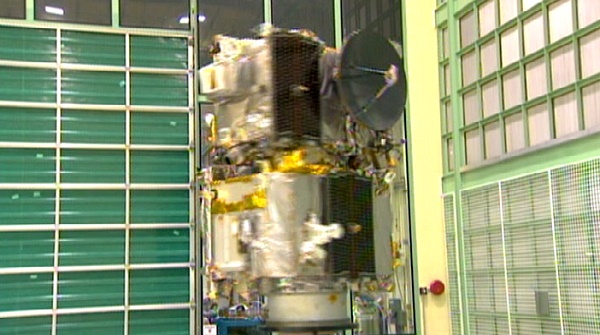Astronomy - The Return of Stereo B?

The current positions of Stereo A and B relative to the Earth.
NASA
NASA
A crucial solar-monitoring asset phoned home this week, as NASA reestablished contact with the Solar Terrestrial Relations Observatory B (Stereo B). The re-connection comes after nearly two years of silence.
NASA lost contact with Stereo B on October 1, 2014. At the time, the Stereo team was preparing for a solar conjunction, when the spacecraft would pass to the other side of the Sun as seen from Earth's vantage point. To communicate with Earth, the dishes would have had to point near the Sun, so to protect the spacecraft from overheating, engineers decided to point both spacecraft away from the Sun (and Earth) and place them in safe-mode hibernation for about a year.
Before Stereo B entered safe mode, the team was testing a command loss timer — think powering your laptop off and on again — when something went wrong. Though the test went as expected, when Stereo B turned back on, its weakened signal quickly faded to silence.
But the team continued attempts to reestablish contact for the next 22 months, and on Sunday, August 21st at 6:27 p.m. EDT (10:27 UT), the Deep Space Network finally reconnected with Stereo B . This was a tentative first contact, enabling engineers to quickly assess which way the spacecraft was pointing before they turned off the high voltage transmitter to conserve power. Further checks must assess the state and health of the spacecraft before science operations can resume.

Stereo A and B in the lab undergoing a spin test.
NASA
NASA
"The telemetry showed that the Inertial Measurement Unit, or IMU — which tells the spacecraft if and how fast it's rotating — failed in a way we didn't expect," says missions operations manager Dan Ossing (Johns Hopkins/Applied Physics Laboratory) in a NASA press release. "Rather than cutting out altogether, it was feeding incorrect information into the guidance and control computer."
Watching the Sun in Stereo
Originally slated for a two-year mission, Stereo has exceeded expectations and duration, even if Stereo B never fully recovers. Stereo A continues to function properly.
Launched on October 26, 2006 from Cape Canaveral atop a Delta II rocket, the unique vantage points of the twin Stereo A and Stereo B spacecraft in heliocentric orbit gave solar astronomers a look at the side of the Sun the Earth doesn't see, providing stereoscopic images. Stereo A and B first reached a point 180° apart in their respective orbits, affording the first full 360° view of the Sun, on February 6, 2011.
There are no final positions for the two spacecraft: you can see the current positions of Stereo A (ahead) and Stereo B (behind) here. And like SOHO, though Stereo wasn't built to observe comets, sungrazers do occasionally photobomb its field of view:
Video credit: A. Fitzsimmons / Queen's University Belfast / NASA / Stereo
This isn't the longest span of time for a spacecraft to come back from the dead: a private team recovered the International Cometary Explorer/ISEE-3 mission in 2014, 15 years after it had been decommissioned.
Still, the possible return of Stereo B to action is a tremendous asset. It rejoins the Sun-watching ranks of NASA's Solar Dynamics Observatory (SDO) and Interface Region Imaging Spectrograph, the joint NASA and European Space Agency (ESA) Solar Heliospheric Observatory mission, ESA's Proba-2, and the joint Japanese Space Agency and NASA Hinode mission. This news also comes as the Sun heads toward what could be another profound minimum in its 11-year activity cycle, similar to what we saw in 2009.
Such is life with a changeable star. Here's hoping that Stereo B is once again open for business and its best days are yet to come.
No comments:
Post a Comment